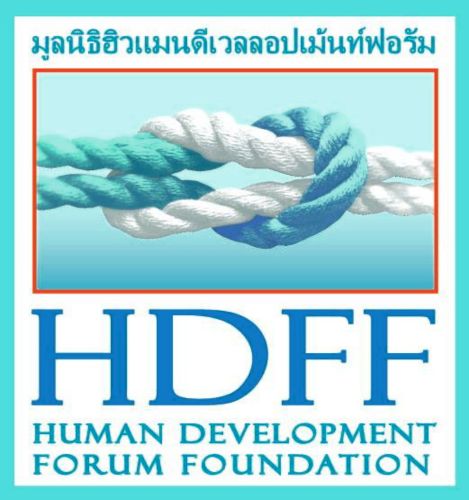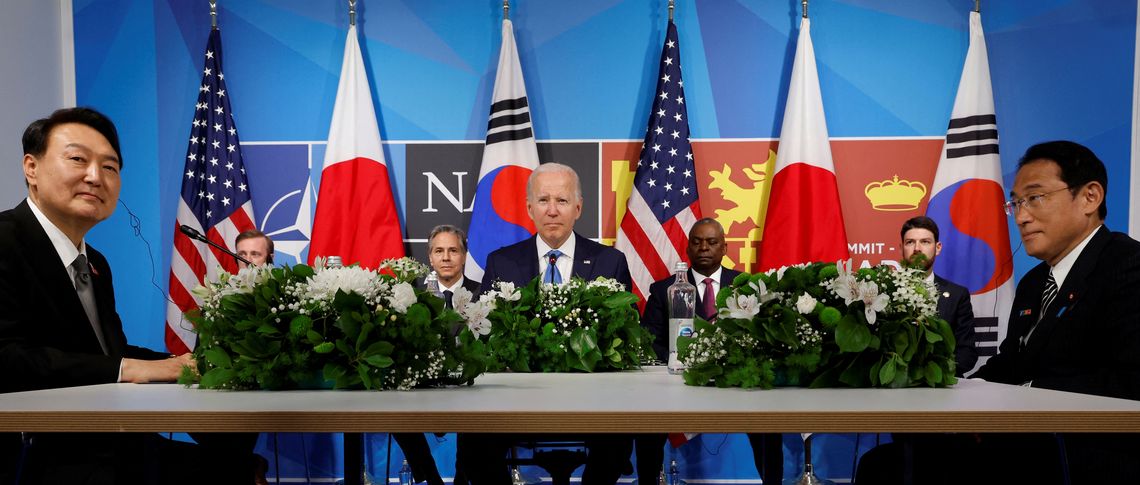NATO’s Expansion
Founded in 1949, the North Atlantic Treaty Organization (NATO) was established as a mutual defense treaty between the United States (US), France, Belgium, Luxembourg, the Netherlands, the United Kingdom, Norway, Denmark, Italy, Portugal, Iceland, and Canada. During the Cold War, membership grew to pursue a containment strategy against the Soviet Union. After the end of the Cold War and the collapse of the Soviet Union (USSR), NATO continued to expand to eastern Europe. As of 2024, it is composed of 32 North American and European member states.
The Alliance celebrated its 75th anniversary at its annual summit in Washington, D.C. Throughout the summit, NATO members signaled a shift to the Indo-Pacific, far from its original boundaries in the North Atlantic. This shift is due to rising concerns of the People’s Republic of China’s (PRC) anticipated influence in the Indo-Pacific, its continued support for Russia, and the strategic alliances being formed between the PRC, Russia, the Democratic People’s Republic of Korea (DPRK), and Iran. As the US and NATO shift to a great power competition with the PRC, the Indo-Pacific will continue to increase in strategic significance.
Why shift to the Indo-Pacific?
NATO does not have a physical presence in the Indo-Pacific but is beginning to establish strategic regional security partnerships. During the July summit, NATO members and partners argued that Russia’s invasion of Ukraine could spark similar violations of the international rules-based order.[i] They are particularly concerned over the PRC’s border disputes with other states in the South China Sea.
NATO’s official language regarding China has become more critical and outspoken in recent years. The change in language has been accelerated by the PRC’s continued support for Russia throughout the war in Ukraine.
In 2019, a NATO document stated that “China’s growing influence and international policies presents both opportunities and challenges that we need to address together as an Alliance.”[ii] Jens Stoltenberg, the former Secretary General of NATO, stated in June 2024 that there should be consequences for the PRC’s continued support for Russia, though he did not specify what those consequences should be.[iii] Most recently, during the 2024 summit, NATO called the PRC a “decisive enabler” of Russia’s war on Ukraine.[iv]
NATO as a deterrence actor
According to former NATO Secretary General Stoltenberg, “NATO’s core business” is that of deterrence.[v] The current hub and spokes model of bilateral treaties between Indo-Pacific states and the US and European states is being reconsidered for a more comprehensive NATO-Indo-Pacific deterrence approach.
A common deterrence strategy has not been decided, but it is generally accepted that NATO will increase its presence and focus on the Indo-Pacific. On the extreme end, the former NATO Supreme Allied Commander Europe, James Stavridis, suggested extending NATO membership to some relevant Indo-Pacific countries.[vi] More moderate suggestions have been to include US islands in the Pacific, such as Hawai’i, which is a US state, and the territory of Guam. There have been increased calls for Hawai’i to be included in the mutual defense clause of NATO since it lies in the heart of the Indo-Pacific. In the event of a conflict between the US and the PRC, it would be the front lines of an attack on US soil.
Another suggestion, which is the Alliance’s current strategy, is for NATO to be “with” the Indo-Pacific, not “in” it.[vii] Many NATO member states are wary of following the US’ more aggressive lead against the PRC and are unsure how they would respond if a conflict broke out over Taiwan or any other Indo-Pacific state. However, European states rely on Chinese exports, and a war between the US and the PRC has an estimated cost of $10 trillion.[viii] This would have ripple effects throughout the world. Therefore, European member states are invested in ensuring that NATO presence in the region is responsible and effective at preventing a conflict.
NATO views establishing partnerships with the Indo-Pacific as a key security concern to combat Chinese-Russian-Iranian-North Korean strategic cooperation.[ix] One of the most significant partnerships is with the Indo-Pacific 4 (IP4). The IP4 is an informal alliance between Australia, Japan, South Korea, and New Zealand which hopes to expand its relationship with NATO to protect itself from aggression from the PRC. Australia looks to gain military know-how. Japan hopes to expand its defense industry through exports to NATO allies. South Korea wants to increase its defense industrial base in NATO member states. Additionally, it wants to bolster protection from NATO as the DPRK strengthens its relationship with the PRC and Russia. New Zealand is seeking NATO protection in the event of regional conflict.[x] The NATO-IP4 partnership will create new initiatives around cyber-security, space security, hybrid threats, interoperability, and defense cooperation.
The bilateral hub and spokes model is being strengthened by some NATO member states. In the Philippines, the US has expanded the Enhanced Defense Cooperation Agreement (EDCA), which establishes rotational military bases for US forces to operate on. The EDCA expansion aims to allow the US to power project in the South China Sea and signal support for the Philippines’ maritime boundary claims.[xi] Germany also committed to signing a defense cooperation agreement with the Philippines in August 2024. The agreement would establish relations between the countries’ armed forces and expand areas for training and cooperation. This move also signaled to the PRC that Germany supports the Philippine’s claims in the South China Sea.
China’s Response
The PRC has accused NATO of pursuing bloc-style confrontation and being stuck in a “Cold war mentality” with “belligerent rhetoric.”[xii] The PRC maintains its claims over disputed territories covered by the nine-dash line and has responded to NATO’s shift to the Indo-Pacific by strengthening strategic partnerships of its own. Recently, Belarus joined the Shanghai Cooperation Organization (SCO), and the PRC has plans to engage in joint military exercises with Russia.[xiii] While the SCO does not have a mutual defense clause like NATO, it is being used to signal to NATO that expansion into the region is not welcome.
Conclusion
NATO member states do not yet have a cohesive and comprehension vision for NATO’ presence in the Indo-Pacific. However, the Alliance is moving towards developing strategic partnerships in the region. From NATO’s perspective, it hopes to advance deterrence capabilities in the region to prevent a conflict with the PRC. The PRC will likely continue to respond by strengthening its own regional partnerships to deter a US-led NATO containment strategy.
Citations
[i] https://thediplomat.com/2024/07/assessing-the-nato-summit-and-indo-pacific-partners/ [ii] https://thediplomat.com/2024/05/nato-and-indo-pacific-partners/ [iii] https://asiatimes.com/2024/07/make-way-for-imperial-nato-with-new-flanks-to-secure/?fbclid=IwZXh0bgNhZW0CMTEAAR0qX7uNuhlU6WELxRUK05W-llhVZwizYeC5RLl7pbS_aEpohFEPVnasfWI_aem_qIlyGd-_pYejBopRkzMR0w [iv] https://www.aljazeera.com/news/2024/7/11/why-are-nato-and-china-facing-off-over-ukraine [v] https://asiatimes.com/2024/07/nato-plug-the-us-indo-pacific-strategys-hawaii-gap/ [vi] https://www.bloomberg.com/opinion/articles/2024-04-08/nato-should-expand-to-japan-australia-south-korea-new-zealand [vii] https://thediplomat.com/2024/05/nato-and-indo-pacific-partners/ [viii] https://www.bloomberg.com/news/features/2024-01-09/if-china-invades-taiwan-it-would-cost-world-economy-10-trillion [ix] https://thediplomat.com/2024/07/assessing-the-nato-summit-and-indo-pacific-partners/ [x] https://asiatimes.com/2024/07/make-way-for-imperial-nato-with-new-flanks-to-secure/?fbclid=IwZXh0bgNhZW0CMTEAAR0qX7uNuhlU6WELxRUK05W-llhVZwizYeC5RLl7pbS_aEpohFEPVnasfWI_aem_qIlyGd-_pYejBopRkzMR0w [xi] https://www.reuters.com/world/philippines-germany-commit-concluding-broader-defence-agreement-2024-08-04/ [xii] https://asiatimes.com/2024/07/nato-de-facto-fueling-indo-pacifics-re-militarization/?fbclid=IwZXh0bgNhZW0CMTEAAR2V0JvJiY3t5oo0o2GWLwa_REN-wQJMvYg7t5iJ6lq30bYWIMn87Dqeia8_aem_kmiVvHy6r-wqPW-AmG8Tdw [xiii] https://www.aljazeera.com/news/2024/7/11/why-are-nato-and-china-facing-off-over-ukraine

Comments are closed